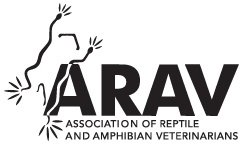Determination of Agreement between Measured and Calculated Plasma Osmolality Values in Captive-Reared American Alligators (Alligator mississippiensis)
Determination of plasma osmolality can be performed either by direct measurement or by calculation based on formulas that utilize biochemical values. The objective of this study was to determine the agreement between measured and calculated plasma osmolality of American alligators, Alligator mississippiensis. Osmolality was measured with a freezing-point depression osmometer. Biochemistry values were used to calculate plasma osmolality. The measured osmolality was found to be in poor agreement with the calculated osmolality for all formulas tested. The regression equation Osmolality = 1.79 × Na+ + 0.05 × (glucose concentration) best approximated the measured values. Measured plasma osmolality of alligators approximates the osmolality of some commonly available crystalloids fluids (Lactated Ringers, Abbott Laboratories, Chicago, IL, Normosol-R, Hospira Inc., Lake Forest, IL) used in veterinary medicine but is 30 milliosmoles per liter per kilogram lower than 0.9% sodium chloride solution. The physiologic significance of this difference, especially when treating ill animals, must be investigated further. Based on these results, we do not recommend calculating plasma osmolality for alligators with previously reported formulas, as calculated values may not agree with measured values.Abstract

Bland–Altman plot of the difference between plasma osmolality measured with an osmometer and osmolality calculated with the equation 2 × Na+ from American alligators. Bias (solid horizontal line) = −18.07 mOsm/kg, limits of agreement (dotted horizontal lines) = −4.1 to −32.1 mOsm/kg.

Bland–Altman plot of the difference between plasm a osmolality measured with an osmometer and osmolality calculated with the equation 2 (Na+ + K+) from American alligators. Bias (solid horizontal line) = −26.1mOsm/kg, limits of agreement (dotted horizontal lines) = −11.7 to −40.5 mOsm/kg.

Bland–Altman plot of the difference between plasma osmolality measured with an osmometer and osmolality calculated with the equation (2 [Na+ + K+]) + (glucose/18) from American alligators. Bias (solid horizontal line) = −39.3 mOsm/kg, limits of agreement (dotted horizontal lines) = −27.7 to −50.1 mOsm/kg.

Bland–Altman plot of the difference between plasma osmolality measured with an osmometer and osmolality calculated with the equation (2 [Na+ + K+]) + (uric acid/16.8) + (glucose/18) from American alligators. Bias (solid horizontal line) = −39.7 mOsm/kg, limits of agreement (dotted horizontal lines) = −27.6 to −51.8 mOsm/kg.

Bland–Altman plot of the difference between plasma osmolality measured with an osmometer and osmolalit y calculated with the equation 1.85 (Na+ + K+) from American alligators. Bias (solid horizontal line) = −3.9 mOsm/kg, limits of agreement (dotted horizontal lines) = −17.6 to 9.8 mOsm/kg.

Bland–Altman plot of the difference between plasma osmolality measured with an osmometer and osmolality calculated with the equation 1.86 (Na+ + K+) from American alligators. Bias (solid horizontal line) = −5.4 mOsm/kg, limits of agreement (dotted horizontal lines) = −19.1 to 8.4 mOsm/kg.

Bland–Altman plot of the difference between plasma osmolality measured with an osmometer and osmolality calculated with the equation (1.86 [Na+ + K+] + [glucose/18] + [UA/16.8] + 9) from American alligators. Bias (solid horizontal line) = −27.8 mOsm/kg, limits of agreement (dotted horizontal lines) = −38.9 to −16.7 mOsm/kg.



